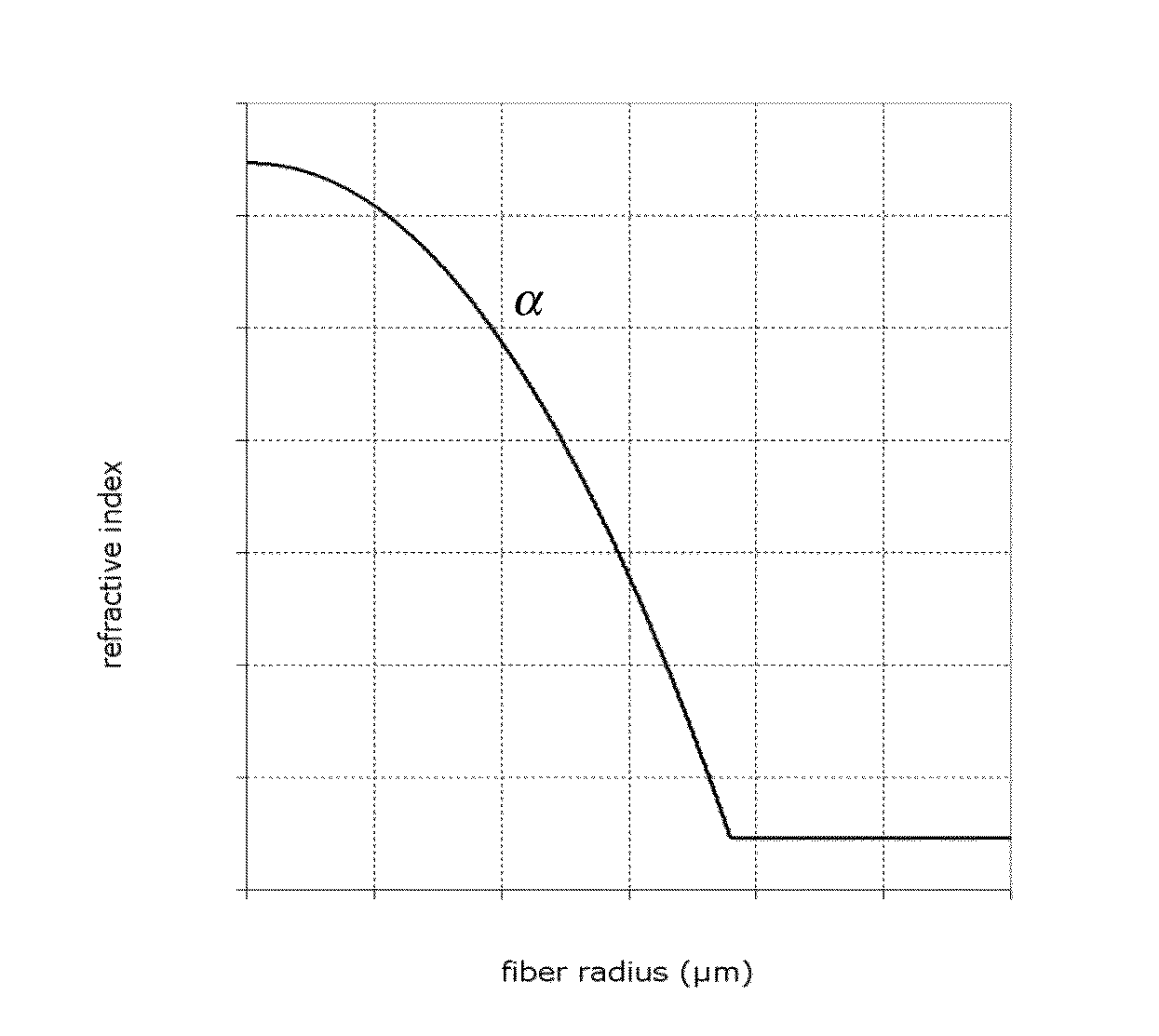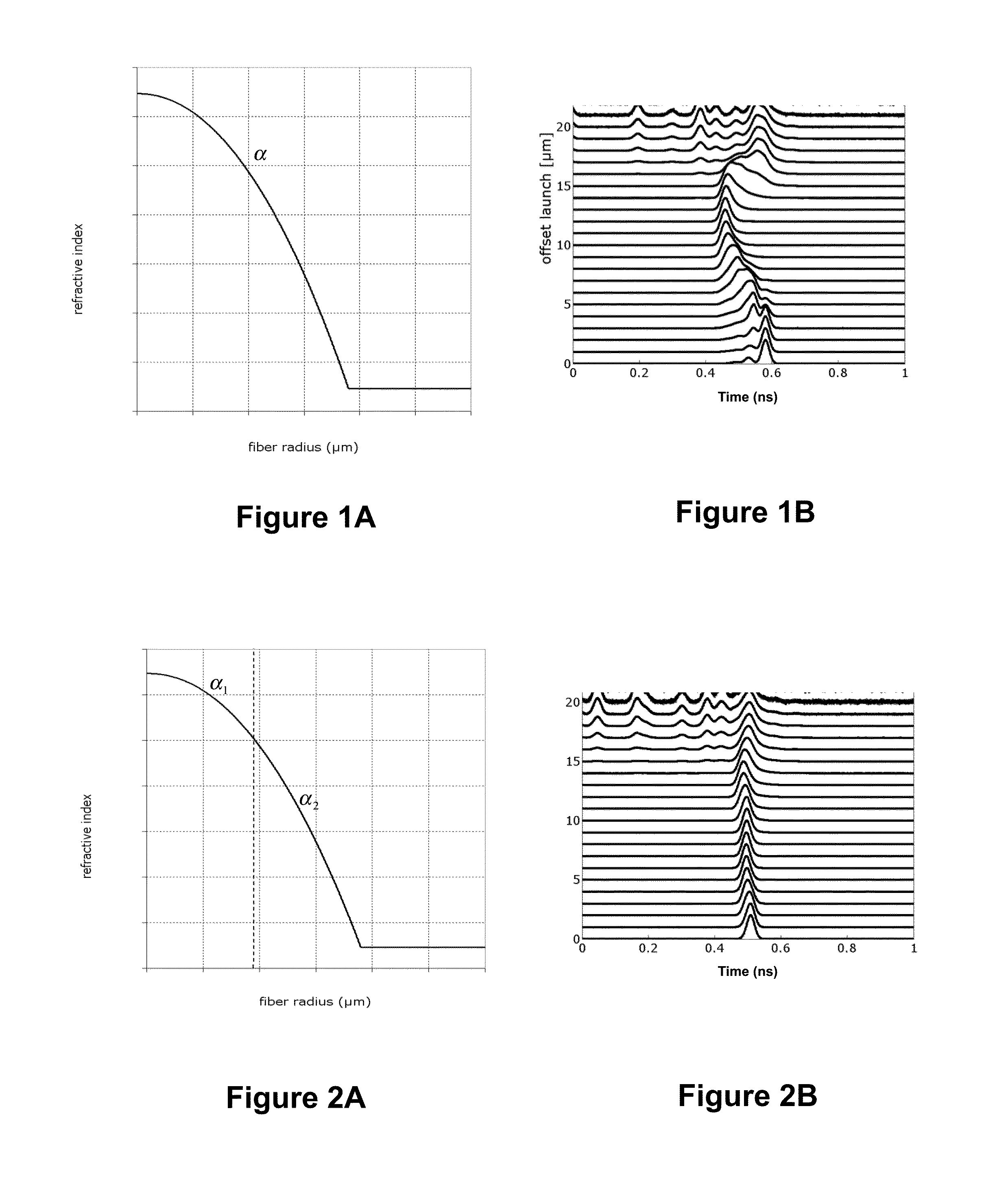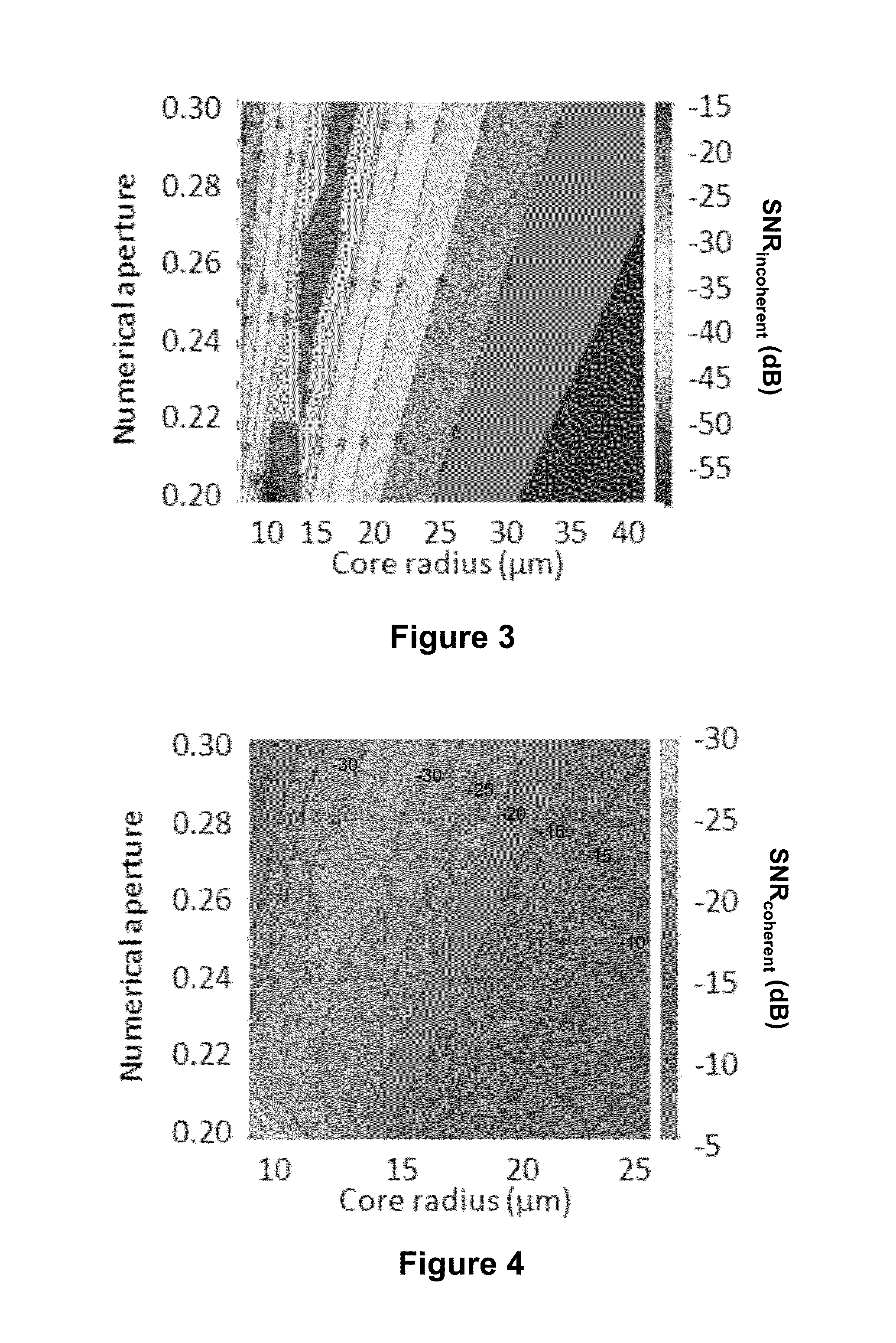High Bandwidth Multimode Optical Fiber Optimized for Multimode and Single-Mode Transmissions
a multi-mode, high-bandwidth technology, applied in the field of fiber optic transmission, can solve the problems of inability to meet the requirements of single-mode fibers, etc., to achieve the effect of simple manufacturing and low cos
- Summary
- Abstract
- Description
- Claims
- Application Information
AI Technical Summary
Benefits of technology
Problems solved by technology
Method used
Image
Examples
first embodiment
[0056]FIG. 1A depicts the refractive index profile n(r) of an optical fiber according to the invention. It describes the relationship between the refractive index value n and the distance r from the center of the optical fiber.
[0057]In that first embodiment, the optical fiber is a graded-index optical fiber having a refractive index profile n(r) defined as follow:
n(r)={n0·1-2·Δ·(ra)αr≤an0·1-2·Δr≥a(III)
where:
r is a variable representative of the radius of the optical fiber,
a is the optical core radius,
Δ is the normalized refractive index difference, with
Δ=n02-n122n02
n1 is the minimal refractive index of the optical core,
n0 is the maximal refractive index of the optical core,
α is a non-dimensional parameter that defines the index profile shape of the optical core, which is chosen between 1.9 and 2.2 so as to provide the largest bandwidth at the target operating wavelength.
[0058]The optical fiber comprises, for 0≦r≦a, an optical core implementing a single alpha graded-index profile and...
second embodiment
[0071]FIG. 2A graphically provides the refractive index profile n(r) of an optical fiber according to the invention.
[0072]In that second embodiment, the optical fiber exhibits an optical core consisted of two portions, an inner optical core and an outer optical core surrounding the inner optical core, and the refractive graded-index profile is a twin alpha graded-index profile n(r) defined by the following equation:
n(r)={n1′·1-2·Δ1·(ra)α10≤r≤rtn2′·1-2·Δ2·(ra)α2rt≤r≤an1′·1-2·Δa<rwhere:Δ1=α2Δ(rta)α2-α1α1+(α2-α1)(rta)α2Δ2=α1Δ(1-2Δ)·(α2-α1)·(rta)α2+α1n1′=n11-2Δn2′=n1·(1-2Δ)·(α1-α2)·(rta)α2-α1(1-2Δ)·((α1-α2)·(rta)α2-α1)(VI)
r is a variable representative of the radius of said optical fiber,
a is the optical core radius comprising both inner and outer optical cores,
rt is the radius of the inner optical core,
n1′ is the maximal refractive index of the inner optical core,
n2′ is the maximal refractive index of the outer optical core,
Δ1 is the normalized refractive index difference relative t...
PUM
 Login to View More
Login to View More Abstract
Description
Claims
Application Information
 Login to View More
Login to View More - R&D
- Intellectual Property
- Life Sciences
- Materials
- Tech Scout
- Unparalleled Data Quality
- Higher Quality Content
- 60% Fewer Hallucinations
Browse by: Latest US Patents, China's latest patents, Technical Efficacy Thesaurus, Application Domain, Technology Topic, Popular Technical Reports.
© 2025 PatSnap. All rights reserved.Legal|Privacy policy|Modern Slavery Act Transparency Statement|Sitemap|About US| Contact US: help@patsnap.com



